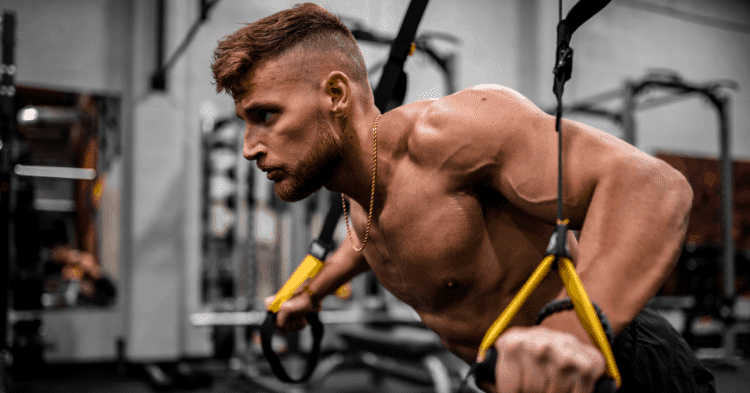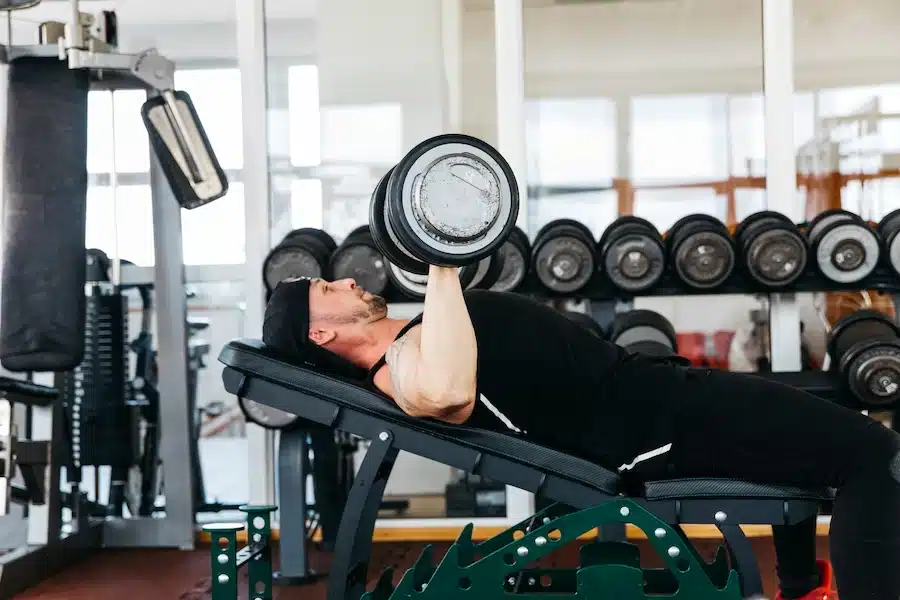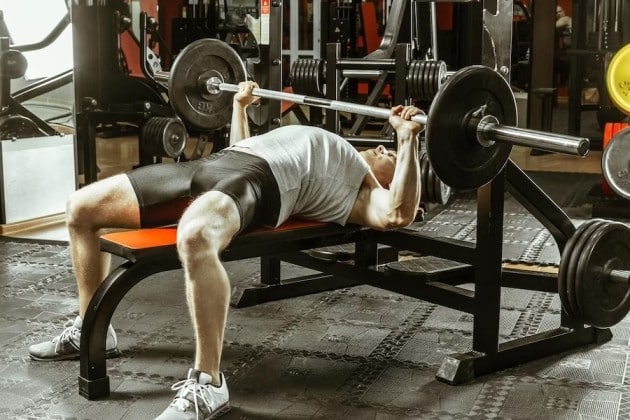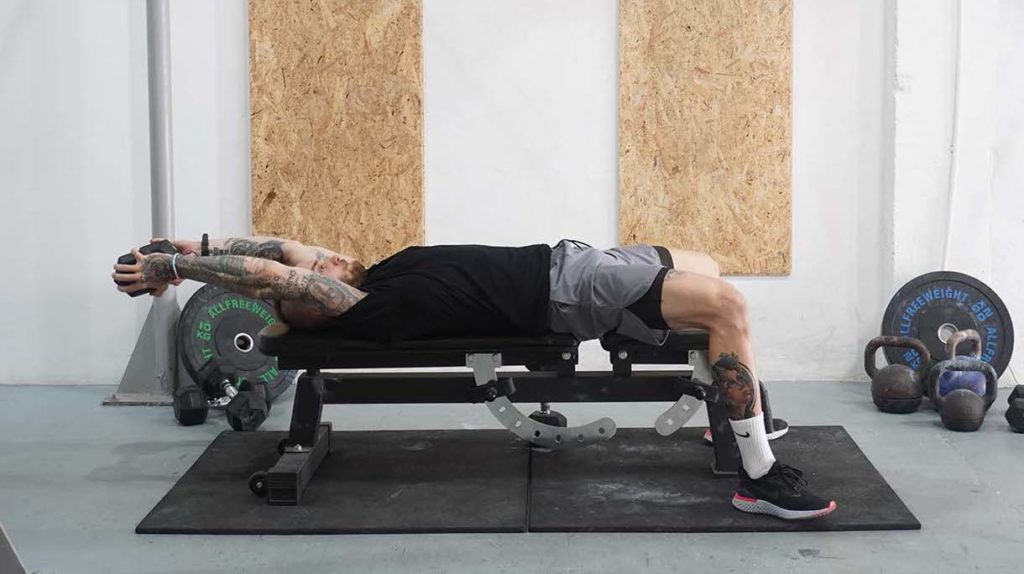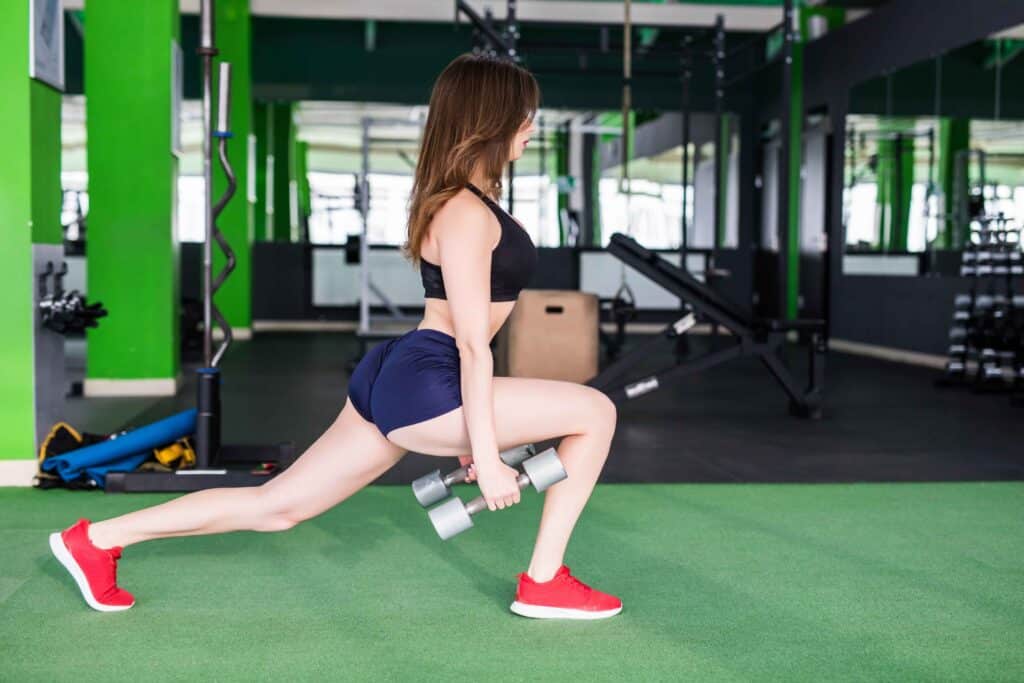Are you tired of the same old chest workouts that seem to yield diminishing results?
If you’re looking to take your fitness journey to new heights and build a powerful, well-defined chest, it’s time to level up your training routine.
While isolation exercises have their place, incorporating compound exercises into your chest workouts can be a game-changer.
Compound exercises engage multiple muscle groups simultaneously, allowing you to lift heavier weights, burn more calories, and enhance your overall strength and functional fitness.
In this blog post, we will get into the world of chest compound exercises, explore their benefits, and provide you with a selection of effective exercises that will take your chest training to the next level.
Are you ready to sculpt a robust, chiseled chest that turns heads at the gym and boosts your confidence?
Let’s get started:
Related Blog
Compound Chest Exercises At Home
Here are the best chest workouts you can do at home for insane results:
1. Chest Dips
Chest dips are a fantastic bodyweight chest workout that targets the chest, shoulders, and triceps. They are a great addition to your workout routine, especially if you lack gym equipment access.
Step 1: Setup
Find a set of sturdy parallel bars or dip bars that can support your body weight. The bars should be slightly wider than shoulder-width apart.
Stand between the bars, facing forward, and grip each bar with an overhand grip (palms facing down).
Jump up slightly or use a step to assist you in getting into the starting position.
Keep your arms fully extended, and your shoulders should be directly above your hands.
Step 2: Lowering Phase
Inhale and slowly lower your body by bending your elbows. Lean your torso slightly forward while keeping your elbows pointing backward.
Lower yourself until your shoulders are just below your elbows or until you feel a comfortable stretch in your chest and shoulders. Avoid going too deep, as this may put excessive strain on your shoulders.
Step 3: Pressing Phase
Exhale and push through your palms to extend your arms, lifting your body back up to the starting position.
Focus on using your chest and triceps muscles to perform the upward movement.
Step 4: Repeat
Continue the up-and-down motion for your desired number of repetitions. Beginners usually start with 6-10 reps per set.
Once you complete the set, gently step down from the bars or jump off.
Tips for Performing Chest Dips Safely:
- Keep your body as upright as possible during this chest workout to emphasize chest engagement.
- Avoid leaning too far forward or flaring your elbows out, as this can place unnecessary stress on your shoulders.
- Engage your core muscles to maintain stability throughout the movement.
- If you find dips too challenging initially, you can use resistance bands or a dip-assist machine to support some of your body weight.
Benefits
- Chest Development: Dips are an effective bodyweight exercise that helps build and define the pectoral muscles.
- Shoulder and Triceps Engagement: They also engage the anterior deltoids (front shoulder muscles) and triceps, providing a well-rounded upper body workout.
- Functional Strength: Chest dips improve your upper body strength and stability, benefiting various daily activities and sports.
- No Equipment Required: Dips can be performed with minimal equipment, making them a convenient at home compound chest exercise.
2. Dumbbell Hex Press
The dumbbell hex press, also known as the floor press or chest press, is an effective exercise that targets the chest muscles while providing stability to the shoulders.
It’s a great alternative to the traditional dumbbell bench press and can be done using a pair of dumbbells.
Step 1: Setup
- Lie flat on your back on the floor or on a weight bench. If you’re on the floor, ensure you have enough space to move your arms freely.
- Hold a dumbbell in each hand, and position your arms so that your upper arms are parallel to the floor and your elbows are bent at a 90-degree angle. Your palms should face forward, and your wrists should be aligned with your elbows.
- Your feet should be flat on the floor, and your core should be engaged to stabilize your body throughout the exercise.
Step 2: The Press
- Take a deep breath and brace your core.
- Press the dumbbells upward by extending your arms fully, while keeping your wrists aligned with your elbows. Push the dumbbells toward the ceiling, but don’t let them touch at the top.
- Ensure that you maintain control throughout the movement and avoid locking out your elbows completely to prevent undue stress on the joints.
Step 3: The Descent
- Inhale and slowly lower the dumbbells back down towards your chest. Your upper arms should remain parallel to the floor throughout the movement.
- Stop just short of touching the floor or weight bench with the dumbbells. Maintaining tension in the chest muscles is essential during this phase.
Step 4: Repeat
- Continue the up-and-down motion for your desired number of repetitions. Beginners usually start with 10-12 reps per set.
Benefits
- Chest Activation: The exercise effectively targets the pectoral muscles, promoting chest muscle development and strength.
- Shoulder-Friendly: It places less stress on the shoulders compared to the traditional bench press, making it a suitable option for individuals with shoulder issues.
- Stability and Control: Since the exercise is performed on the floor or a stable surface, it requires greater stabilization from the chest muscles, contributing to improved overall upper body stability.
- Balance and Symmetry: Performing the exercise with dumbbells helps address any strength imbalances between your left and right sides.
Compound Chest Exercises For Mass
Unsure of how to build a chest of dreams? Do these exercises to get the job done:
3. Barbell Bench Press
The barbell bench press is a classic compound exercise that primarily targets the chest muscles while also engaging the shoulders and triceps.
It’s a fundamental movement for building upper body strength and muscle mass. Moreover, this dumbbell compound chest workout enhances stability in the shoulder girdle and surrounding muscles, reducing the risk of injuries in the upper body.
Step 1: Setup
- Begin by adjusting the bench to a flat position or incline of your preference. Lie down with your back flat on the bench, feet firmly planted on the ground, and your eyes aligned with the barbell.
- Position yourself on the bench so that the barbell is directly above your eyes when you look up.
- Grip the barbell slightly wider than shoulder-width apart with both hands. Your palms should face forward, and your thumbs should wrap around the bar.
- Create tension in your upper back by squeezing your shoulder blades together, and arch your back slightly to create a stable base.
Step 2: Unrack the Barbell
- Take a deep breath and tighten your core.
- Press your feet into the ground to help lift the bar off the rack.
- Move the barbell over your chest with your arms fully extended. Ensure that the bar is directly above your shoulders.
Step 3: The Descent
- Lower the barbell slowly and under control towards your mid-chest. Keep your elbows at around a 45-degree angle from your body throughout the movement.
- Lower the bar until it lightly touches your chest or comes close to it without bouncing.
Step 4: The Press
- Push the barbell back up by fully extending your arms, exhaling as you exert force.
- Focus on pressing the weight with your chest muscles while maintaining tension throughout your body.
Step 5: Repeat
- Continue the up-and-down motion for your desired number of repetitions. Beginners usually start with 10-15 reps per set.
Benefits
- Muscle Growth: The primary focus on the pectoral muscles during the bench press stimulates muscle growth, leading to increased chest size and strength.
- Strength Development: This compound exercise engages multiple muscle groups, promoting overall upper body strength development.
- Functional Upper Body Strength: The bench press is a fundamental movement that translates into various everyday activities and sports.
- Progressive Overload: As you get stronger, you can progressively add more weight to the barbell, further promoting muscle growth and strength gains.
4. Dumbbell Pullover
The dumbbell pullover is a versatile upper body exercise that primarily targets the chest, lats (latissimus dorsi), and triceps. It also engages the shoulders and core to some extent.
The exercise can be performed on a flat bench or across a stability ball.
Step 1: Setup
- Begin by sitting on a flat bench or across a stability ball with your feet firmly planted on the ground.
- Hold a single dumbbell with both hands, cupping the top-weight plate with your palms while your fingers wrap around the handle.
- Lie back on the bench or ball to support your upper back and head. Keep your hips level and your knees bent at approximately 90 degrees.
- Position the dumbbell over your chest, and extend your arms straight up toward the ceiling. This is your starting position.
Step 2: The Pullover
- Inhale deeply and maintain a slight bend in your elbows throughout the movement.
- While keeping your core engaged, slowly lower the dumbbell backward in an arc over your head.
- Lower the dumbbell until you feel a stretch in your chest and lats. Be cautious not to overstretch or let your lower back arch excessively.
Step 3: The Return
- Exhale as you bring the dumbbell back to the starting position by reversing the arc and using your chest and lats to pull it up.
- Keep your core engaged to stabilize your body during the ascent.
Step 4: Repeat
- Continue the controlled up-and-down motion for your desired number of repetitions. Beginners usually start with 8-12 reps per set.
- Once you complete the set, safely set the dumbbell down beside you.
Benefits
- Chest and Lat Engagement: The exercise targets the chest muscles (pectoralis major) and the latissimus dorsi muscles in the back, promoting balanced upper body development.
- Triceps Activation: The triceps assist in the lifting phase of the pullover, providing additional work for the back of the arms.
- Core Stability: Your core muscles are engaged throughout the movement to stabilize your body on the bench or stability ball.
- Variation in Training: The dumbbell pullover adds variety to your upper body workout routine, targeting different muscle groups than traditional pressing exercises.
5. Landmine Press
The landmine press is a powerful and functional chest exercise that primarily targets the shoulders, upper chest, and triceps.
It also engages the core muscles to provide stability and support during the movement. The landmine press can be performed using a landmine attachment or a barbell anchored in a corner.
Step 1: Setup
- Place the landmine attachment into a barbell sleeve or securely anchor one end of a barbell into a corner. Ensure that the attachment is stable and won’t move during the exercise.
- Load the other end of the barbell with weight plates if desired, or use an unloaded barbell to start.
- Stand with your feet shoulder-width apart, facing the landmine attachment or anchored barbell.
- Hold the barbell with one hand, positioning the hand in front of your shoulder and just outside the collarbone. Your palm should face inward, and your elbow should be bent at approximately 90 degrees.
Step 2: The Press
- Brace your core and stabilize your body by engaging your glutes and maintaining a neutral spine.
- Press the barbell upward by extending your arm fully while maintaining control.
- Your hand should move along a diagonal path away from your body as you press the barbell up and slightly across your body.
Step 3: The Descent
- Slowly lower the barbell back down to the starting position in a controlled manner, following the same diagonal path.
- Keep your core engaged and maintain stability throughout the descent.
Step 4: Repeat
- Continue the controlled up-and-down motion for your desired number of repetitions on one side.
- Switch to the other side and repeat the same number of repetitions.
Tips for Performing the Landmine Press Safely:
- Maintain a stable and neutral spine throughout the exercise to protect your lower back.
- Keep your core engaged to prevent excessive arching or twisting during the press.
- Start with a lightweight to focus on mastering the movement and gradually increase the load as you become more comfortable.
- Perform the exercise in a slow and controlled manner to maximize muscle engagement and reduce the risk of injury.
Wind-Up
Throughout this blog post, we’ve explored various compound chest exercises that offer diverse challenges and keep your workouts engaging and rewarding.
Let’s get ready to stand tall with an aura of strength and fitness that inspires others to take charge of their health too.
So, what are you waiting for? Embrace the power of compound chest workouts, challenge yourself, and witness the incredible transformation of your chest and overall physique.


